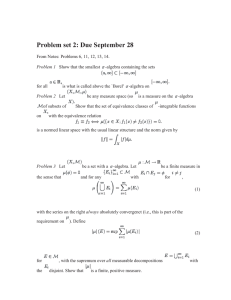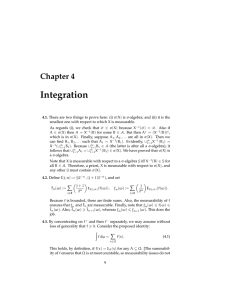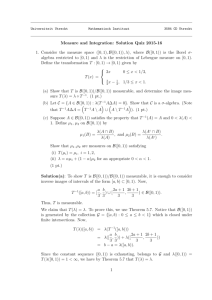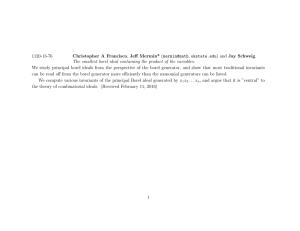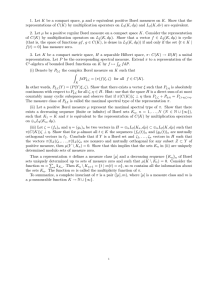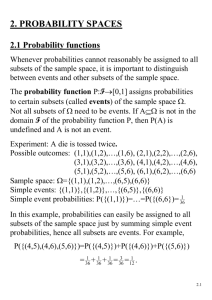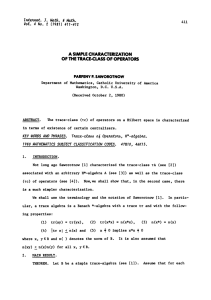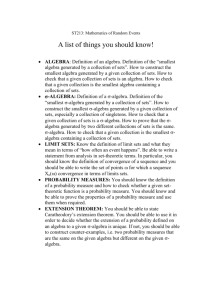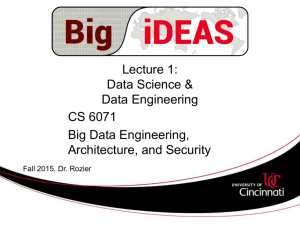08_MeasureTheoryUsefulForStat
advertisement
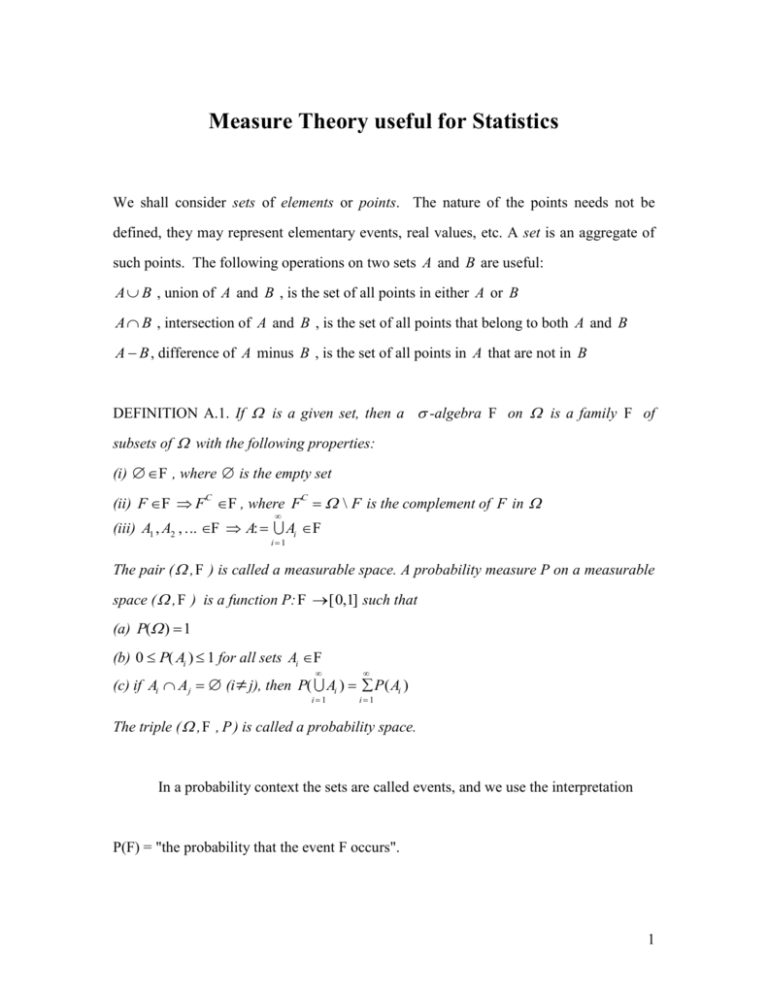
Measure Theory useful for Statistics
We shall consider sets of elements or points. The nature of the points needs not be
defined, they may represent elementary events, real values, etc. A set is an aggregate of
such points. The following operations on two sets A and B are useful:
A B , union of A and B , is the set of all points in either A or B
A B , intersection of A and B , is the set of all points that belong to both A and B
A B , difference of A minus B , is the set of all points in A that are not in B
DEFINITION A.1. If is a given set, then a -algebra F on is a family F of
subsets of with the following properties:
(i) F , where is the empty set
(ii) F F FC F , where FC \ F is the complement of F in
(iii) A1 , A2 , ... F A:
i1
Ai F
The pair ( , F ) is called a measurable space. A probability measure P on a measurable
space ( , F ) is a function P: F [0,1] such that
(a) P( ) 1
(b) 0 P( Ai ) 1 for all sets Ai F
i1
i1
(c) if Ai Aj (i j), then P( Ai ) P(Ai )
The triple ( , F , P ) is called a probability space.
In a probability context the sets are called events, and we use the interpretation
P(F) = "the probability that the event F occurs".
1
An important -algebra used to define random variables is the Borel -algebra
on 1 where 1 is the real line. The Borel -algebra on 1 , noted B1 , is the smallest
-algebra containing the collection I of all the open intervals of 1
of the form
( a, b) ={: a < < b}, (-< a b< ) , namely
B1 {H : H - algebra of 1 , I H }.
It can be shown that the Borel -algebra B1 does indeed exist. The elements B B1 are
called Borel sets, and they include all real intervals; open, closed, semiclosed, finite or
infinite.
If ( , F , P ) is a given probability space, then a function y: 1 is called F measurable if
y 1 (U): { : y( ) U} F .
On the strength of the notions introduced we define the random variable as follow
DEFINITION A.2: Let ( , F , P ) be a given probability space, and ( 1 , B ) be a
1
measurable space, where B is a -algebra of Borel sets on the real line . A (real
1
1
valued) random variable x( ) , where are elementary events, is a
F
measurable
mapping from ( , F ) to ( , B ), i.e. x: and
1
B B1 ,
1
1
x 1(B): { : y( ) B} F
Every random variable induces a probability measure x on ( , B ), defined by
1
1
2
x (B) P(x 1(B)) P[x x( ) B1 ]
From the probability measure x we define the cumulative distribution function of the
random variable x
Fx ( ) x (I :{' : ' }) P[x ]
3

